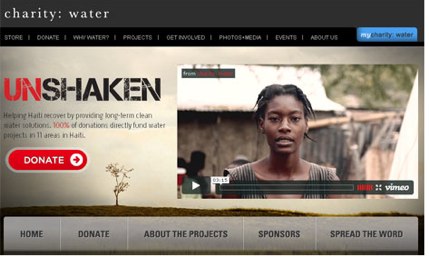Imagine frequenting your local coffee or sandwich joint and receiving said item on your tenth visit.
Imagine being rewarded with a free trip from Boulder to Boston after choosing Continental for 100,000 air miles worth of travel. Easy, these customer loyalty programs have been around for a while, working seemingly well for both high-margin and low-margin products.
But now imagine making your fifth donation to Room to Read or Mercy Corps. Your likely reward will be more mail asking you for more money as you’re moved through the fundraising pipeline.
So here’s my proposition to nonprofits and companies savvy enough to know that cause partnerships work, but aware of creeping cause marketing fatigue to consumers: Create a contributor loyalty program by matching every donor’s nth donation to the nonprofit organization.

Take charity: water as an example. As a contributor, I would get an email letting me know that once I’ve made five donations over $20, charit: water’s partner (let’s go with Clorox’s Brita water filters) will match my donation up to $50. Brita and charity: water would also attract new donors (Twitter and Facebook are low-hanging fruit) with Brita’s pledge of a future match. And sure, why not have Brita email me a coupon for a water filter at the time of its donation, giving me an action to channel my new brand awareness and enthusiasm.
Or go a step further and create a branded product available only to repeat donors. After my fifthth donation of more than $20 to The Nature Conservancy (TNC), Timberland matches my next donation up to $xx and sends me a coupon for a pair of TNC-branded sandals (unavailable to the public), which label me as committed supporter of the environment.
This type of campaign would generate more goodwill for the company than a normal percentage-of-sale or buy-one-give-one campaign because the matched donation isn’t dependent on the consumer buying a Brita or Timberland product. Rewarding donor commitment also requires a long-term partnership between the nonprofit, the for-profit and the donor, which is an important component of successful cause campaigns.
I’d love to hear from you, from whatever perspective you bring–nonprofit, corporate, new donor or committed donor. Is this inspiring enough? Do you feel it provides enough rewards to the company in the short-term?
____________________________
An article profiling Subaru’s new badges for owners catalyzed this train of thought. Subaru owners can now order badges to stick on their cars indicating how many Subarus they’ve owned (and how many of which they’ve driven over 100K miles) and what type of outdoor activities they like. The badges have been a surprising success for Subaru since they launched two weeks ago.





 I'm Olivia Khalili. I created Cause Capitalism to show you how to grow your business by incorporating a social mission.
I'm Olivia Khalili. I created Cause Capitalism to show you how to grow your business by incorporating a social mission. 

This combines a number of strategies. I’d be curious to see what impact it would have. An interesting place to test it would seem to be public radio/public television – which has seemed to both motivate and reward small as well as larger donors for contributions, but not according to multiple gifting.
Mary,
You’re a regular reader and commenter. Thanks! I think that’s a great idea and agree it’s a good place to test the premise. I also think that a large number of contributors to public radio stations are repeat gifters. Thanks again.